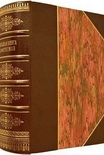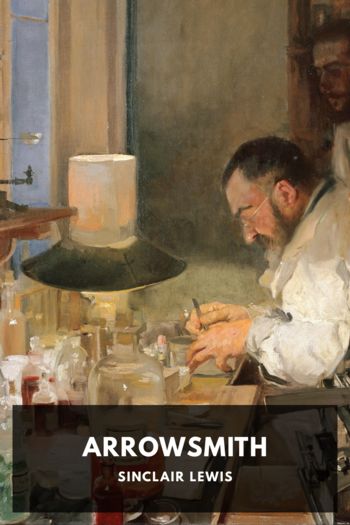Holocaust: The Nazi Persecution and Murder of the Jews, Peter Longerich [essential books to read TXT] 📗

- Author: Peter Longerich
Book online «Holocaust: The Nazi Persecution and Murder of the Jews, Peter Longerich [essential books to read TXT] 📗». Author Peter Longerich
to adopt a radical stance on the ‘Jewish question’, distance themselves from
traditional conservative views, and fall into line behind the National Socialists.
There were two political organizations in particular that paved the way for their
move into the National Socialist camp with an ‘Aryan clause’, the German
National[ist] People’s Party (DNVP) and the ‘Stahlhelm’—the so-called Steel
Helmet Veterans’ Organization, which would join with the NSDAP in 1931 to
form the Harzburg Front and become partners in Hitler’s government in 1933.
The DNVP took the decision to exclude Jewish members in 1924 and (for
formal reasons) again in 1926. 65 This decision was in line with the ideas of the right wing of the Party that used the Party’s cooperation with democratic forces in
parliament and coalition governments (in 1925 and 1927) to accuse the leadership
of abandoning its fundamental opposition to the Weimar Republic and of bring-
ing it too close to the state that it disliked. With the election of Alfred Hugenberg
in 1928 the right wing of the Party prevailed and determined on an alliance with
the NSDAP. 66 Hugenberg was himself relatively restrained about making anti-Semitic statements, probably because of his interests as the head of a group of
press companies, but it is clear that the exclusion of Jewish members was a
precondition for the Nazi-friendly line of development that the Party took. In
the Steel Helmet Veterans’ Organization the völkisch wing under the Deputy
Leader, Theodor Duesterberg, gradually succeeded in taking over and bringing
about a political alliance with the DNVP and the NSDAP. 67 These forces managed to engineer the exclusion of Jewish members in 1924 and ensured that thereafter
the organization routinely took an anti-Semitic stance.
The strong influence of völkisch forces on attitudes to the ‘Jewish question’ was
also felt in the ‘Reichslandbund’ or National Rural League, the successor to the
strongly anti-Semitic pre-First World War Farmers’ League. The RLB’s propa-
ganda shifted in 1924–5 towards the extensive use of anti-Semitic stereotypes
under pressure from völkisch forces. These were attempting to depict the particu-
lar burdens on agriculture, following currency stabilization in 1924, as a conspir-
acy on the part of international Jewry to force it into subjugation. This way of
seeing things was adopted to a large extent by the RLB. 68
The German National Association of Commercial Employees (DHV) had
more than 300,000 members at the end of the 1920s and it undertook a lively
programme of anti-Semitic propaganda and education. Under the intellectual
leadership of the publicist Wilhelm Stapel, the Association propagated a völk-
isch-cultural brand of anti-Semitism and stressed the essential incompatibility of
being both German and Jewish. 69
Anti-Semitism in the Weimar Republic
21
Thus the Weimar Republic saw a large number of middle-class associations take
steps to exclude their Jewish members, and it is remarkable that the anti-Semitic
forces managed to implement this process of exclusion precisely during the most
stable period of the Republic, at a time, therefore, when such associations were
recovering from the years of inflation and consolidating themselves. For instance,
the ‘Jewish question’—the demand by völkisch members of the association that an
‘Aryan clause’ be inserted into the constitution—played a major role from the
early 1920s onwards at the annual general meetings of the German-Austrian
Alpine Club, which was probably the most important of all German leisure and
tourist organizations. Important branches such as Berlin and Breslau did in fact
succeed in banning Jewish members. 70
However, discussions about the introduction of an ‘Aryan clause’ were held in
German gymnastic associations (the German League of Gymnasts did not
accept Jewish members), in the German Academy, in the Association for
Germans Abroad, and other organizations where the anti-Semitic forces did
not prevail. 71
Scattered references to the exclusion of Jews from local associations can be
found throughout the literature on regional history, but the question of how far
this represented a consistent pattern is an important area that still requires further
research—and in the light of the importance of such associations in Germany and
their close connections with local politics this omission is all the more scandalous.
Students took a leading role in the spread of radical anti-Semitic ideas in
German society. At the beginning of the 1920s almost all the student bodies had
ceased to accept Jewish members. The Deutscher Hochschulring, an umbrella
organization of student associations (DHR), refounded in 1920, saw itself as
particularly völkisch and anti-Semitic and quickly became a powerful force in
most of the country’s universities, the general student councils, and within the
German National Student Union. This dominant role found expression above all
in the huge influence the DHR had on getting the student body to adopt radical
anti-Semitic positions. 72 This occurred for the first time in 1922 when the DHR
was able to push through a constitutional amendment according to which the
association sanctioned the practice of its members, the German and Austrian
student organizations, of not accepting any students of Jewish origin at all. 73
Five years later the University Circle caused another conflict linked to the
‘Jewish question’. It was sparked by the fact that the majority of state-
recognized and state-supported student associations accepted Jews into their
ranks provided they were German citizens, but did not accept Jews classed as
‘Germans from abroad’, such as those from Danzig or territories ceded to
Poland. When the Prussian Minister of Culture demanded that this practice
be changed, in a vote taken in 1927 the majority of the student representa-
tives voted against, which eventually led to the dissolution of the student
organizations. 74
22
Historical Background
At the end of the 1920s the leading political role amongst student organizations
was taken over by the National Socialist League of German Students. After 1929 it
ensured that the student associations in a number of universities decided to
demand that the number of Jewish students be limited to the proportion of Jewish
members of the population in the area of the Reich. 75 Violence against Jewish students and professors was a daily occurrence in German universities towards the
end of the Weimar Republic. 76
Radical anti-Semitic positions also spread within the two principal Christian
confessions where they reinforced what were already fairly strong anti-Semitic
prejudices that had been formed on confessional or religious grounds.
Within the Protestant Church a group known as the ‘German Christians’ had
formed from the early 1920s onwards, rejecting the Jewish roots of Christianity—
most notably the Old Testament and the Jewish ancestry of Jesus himself—and
attempting





Comments (0)